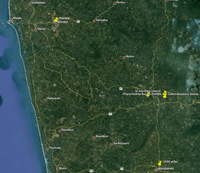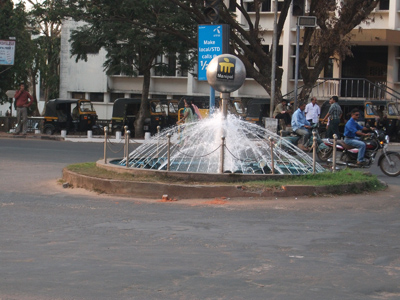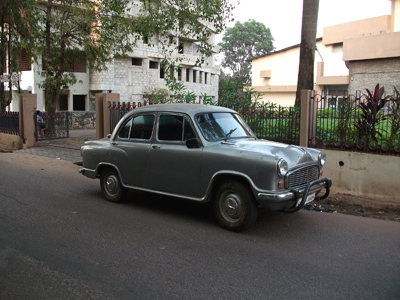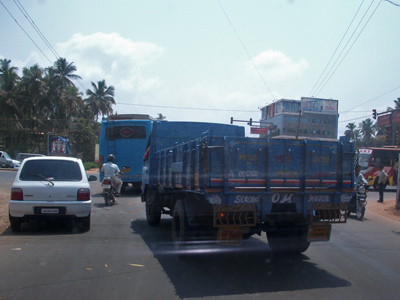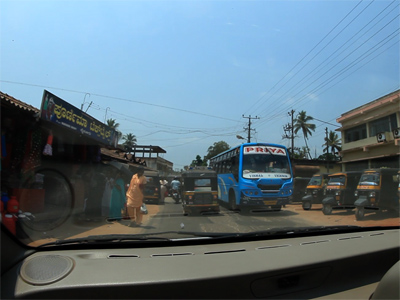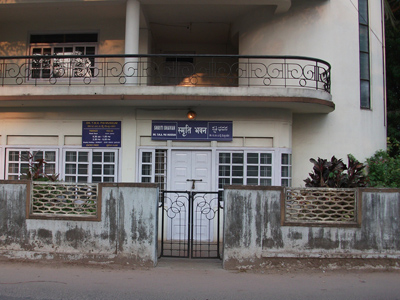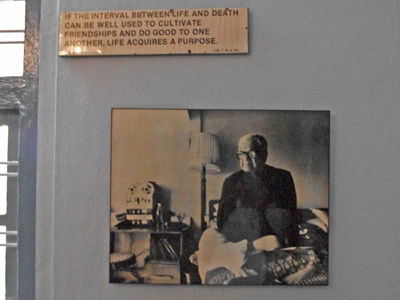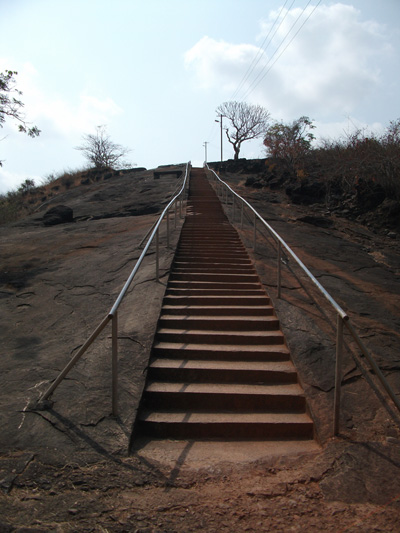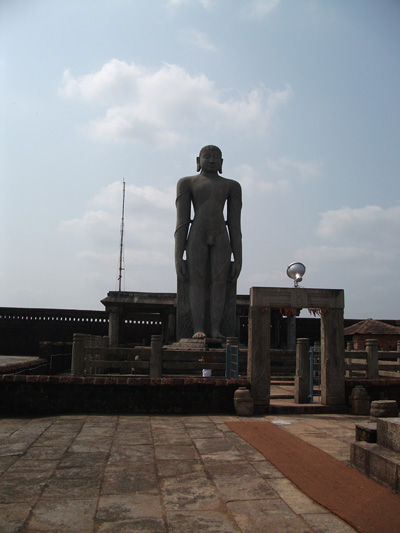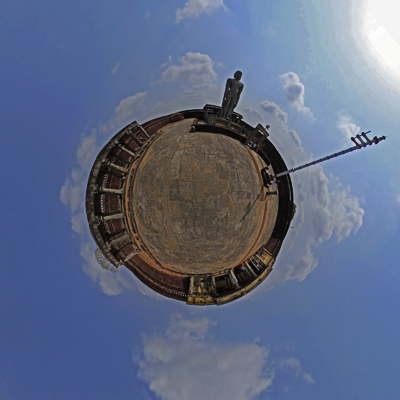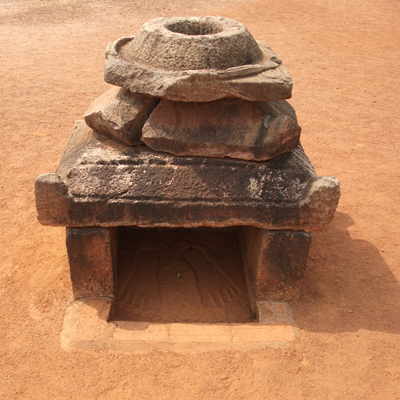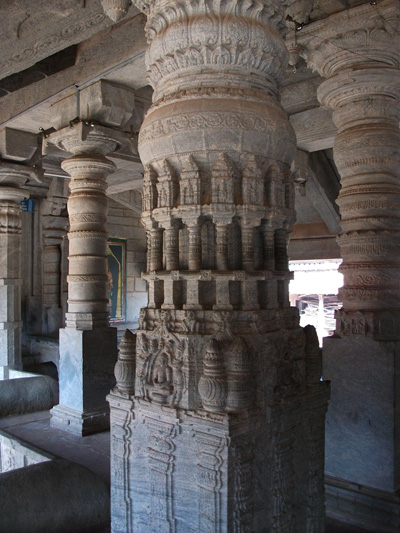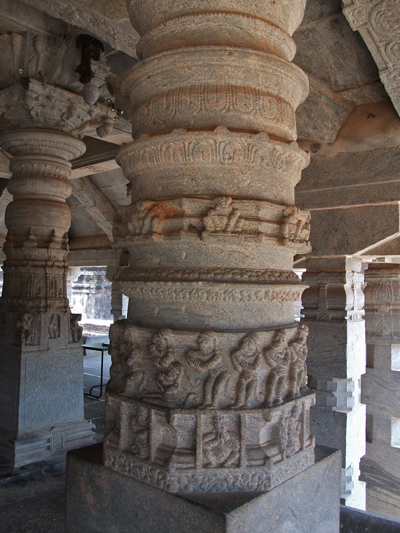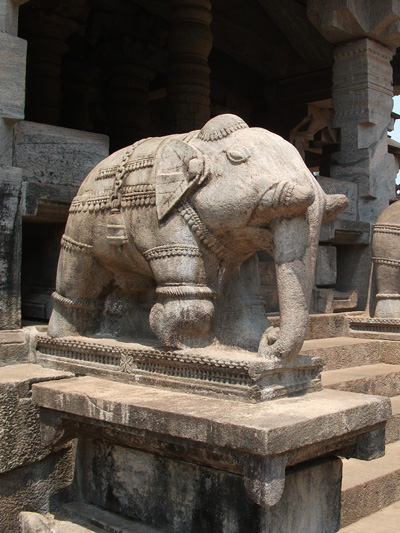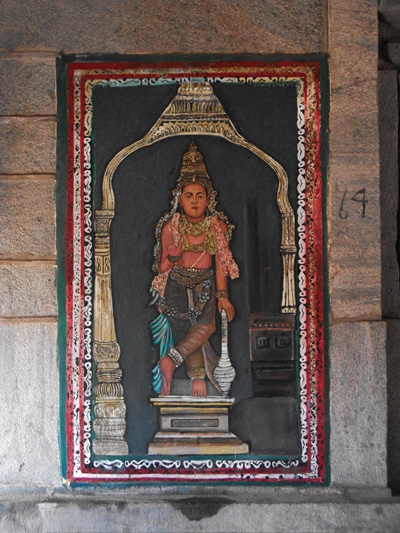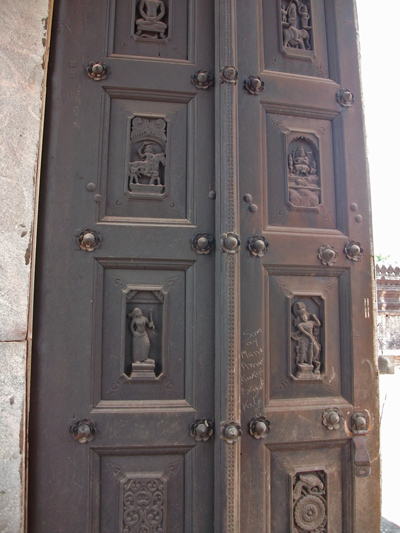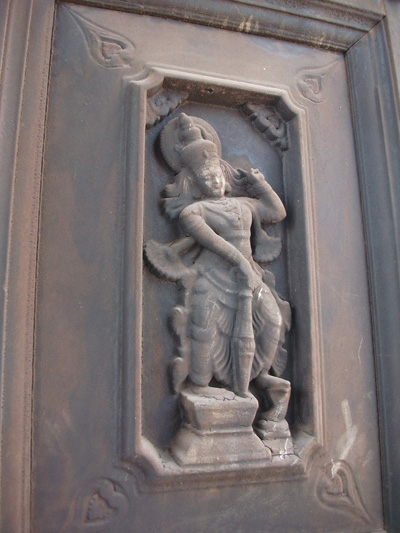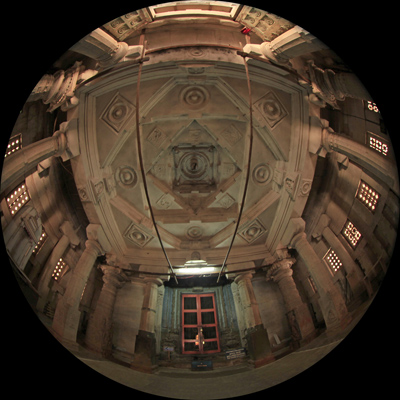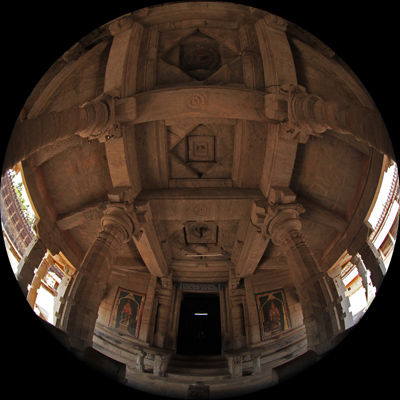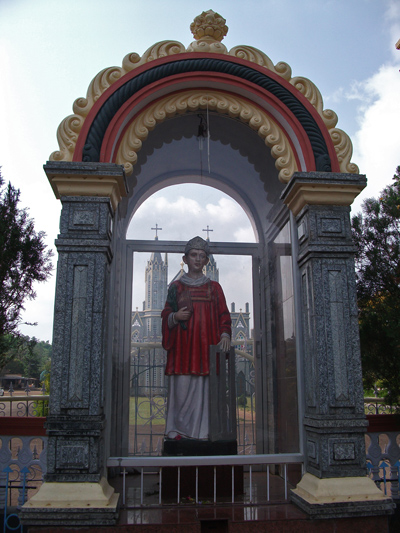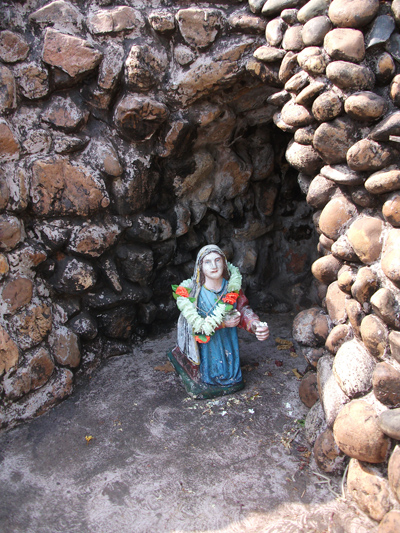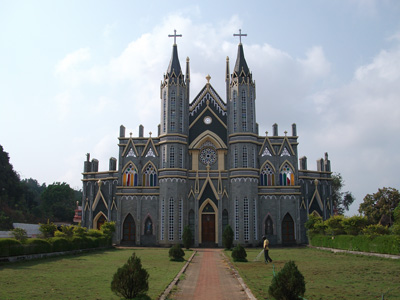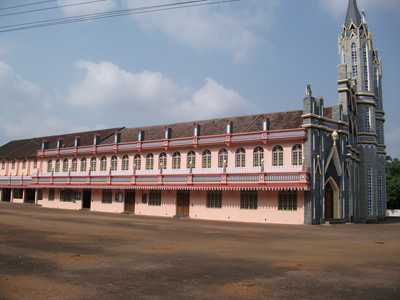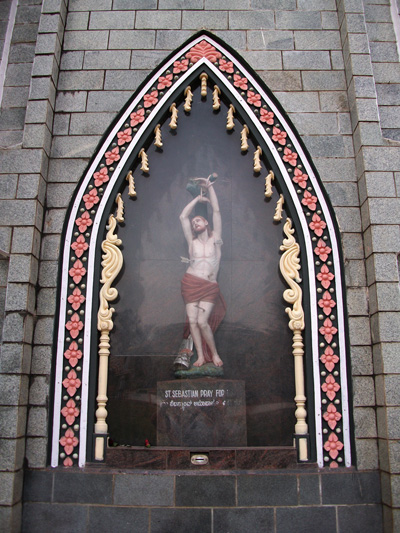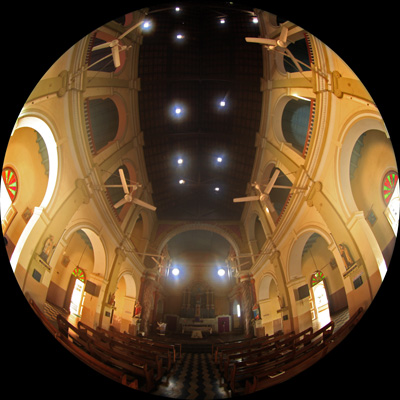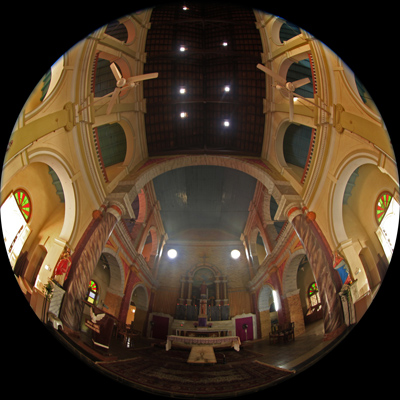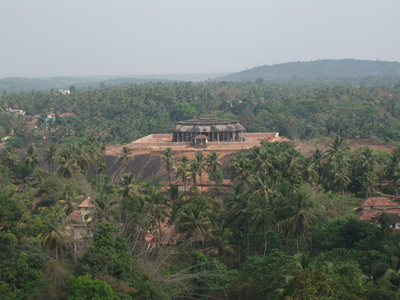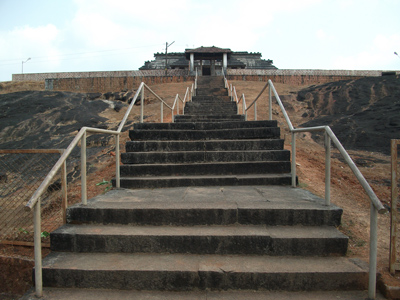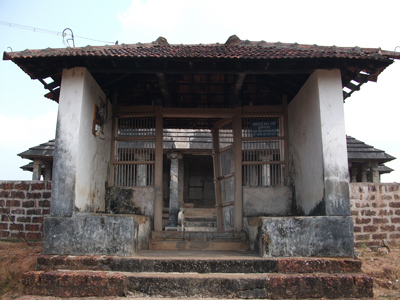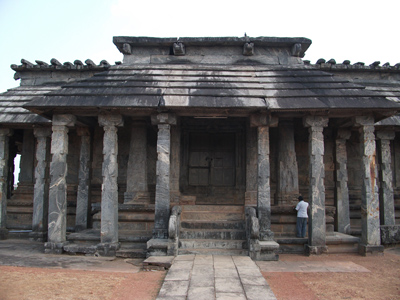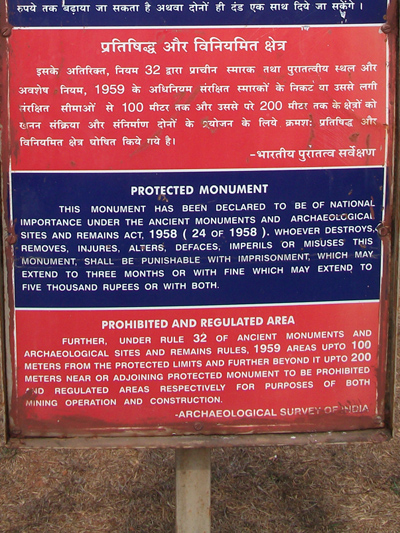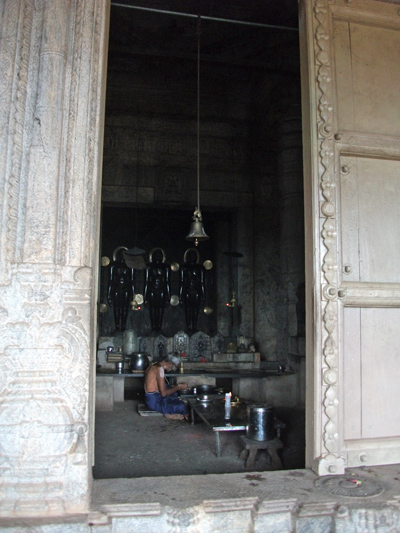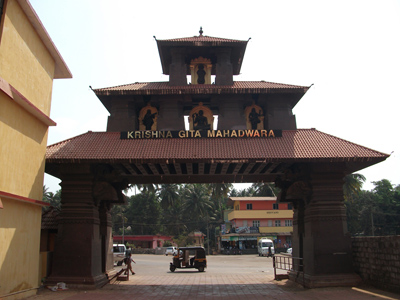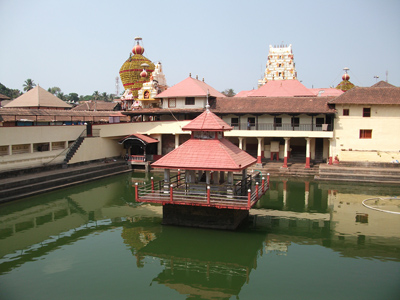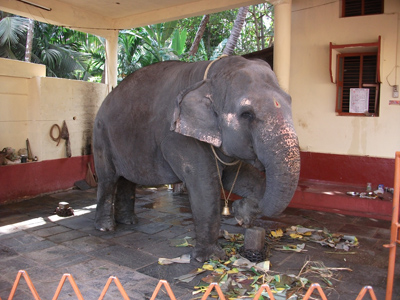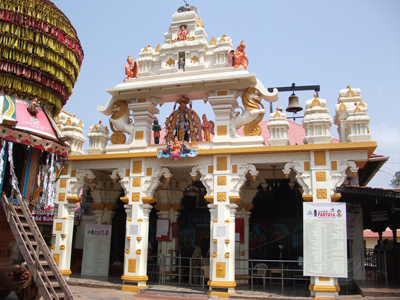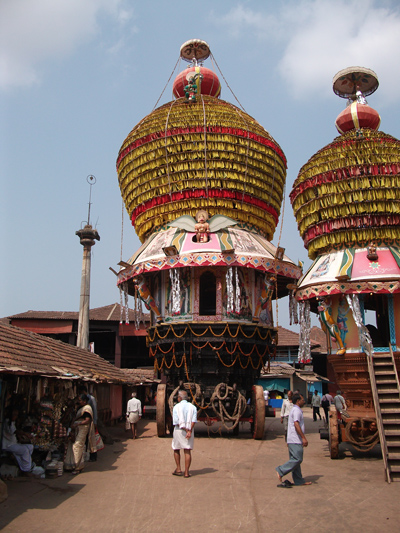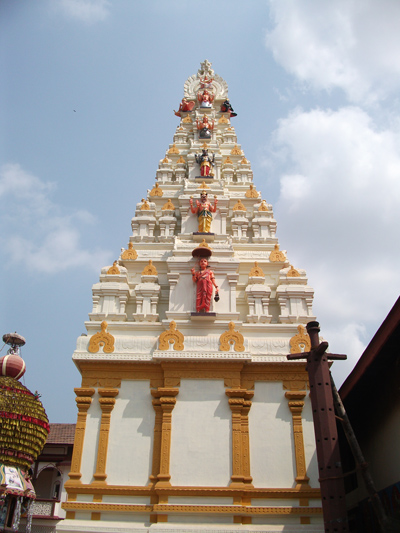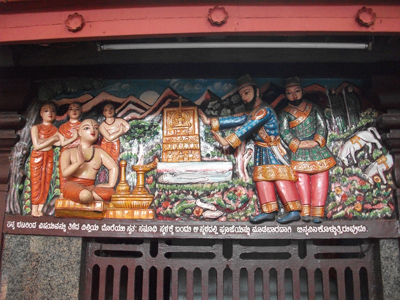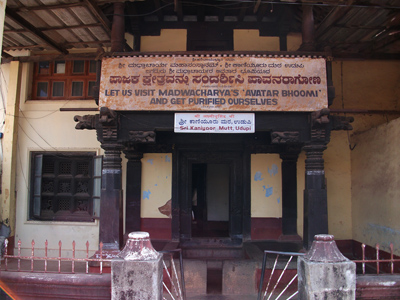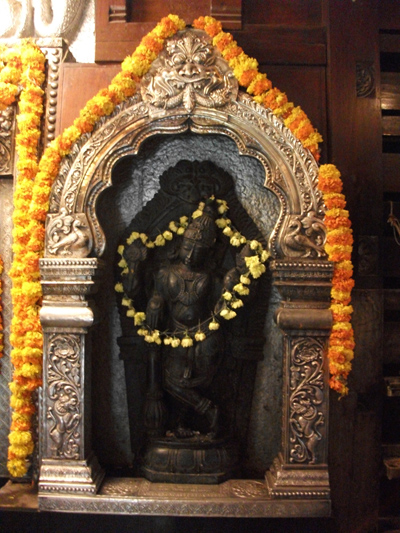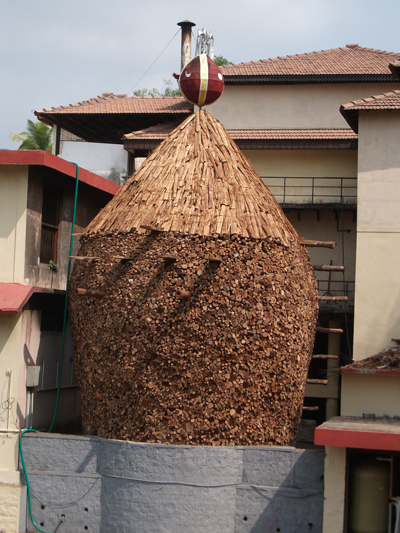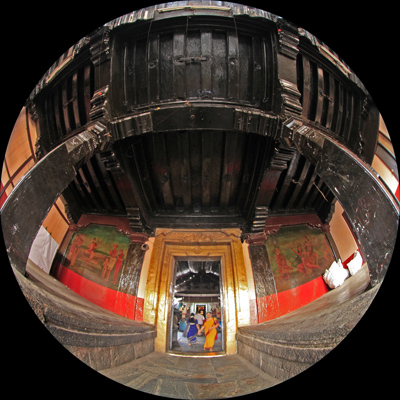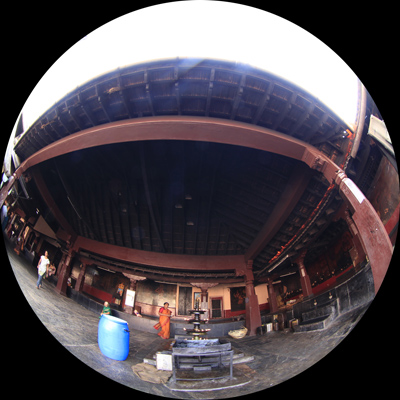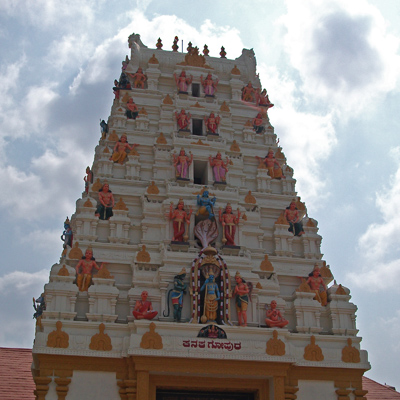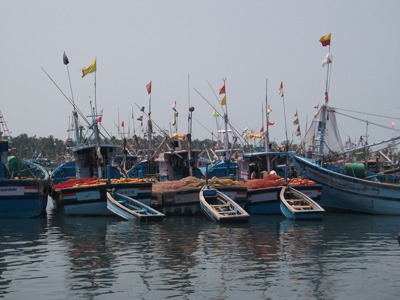Manipal
The following is a photo-gallery with random notes following a visit to Manipal and exploration of the surrounding region, namely Karnataka. As with all such things this was written in early 2012 only includes the narrow range of experiences of the author. There is undoubtedly much more to see and your experiences may be different. As time passes the information will become increasingly dated so please treat the information presented in that light. The town itself is very small and essentially a University town, for a wider range of shopping the nearby town is Udupi is an option. The main strength of the University seems to be in the medical school and hospitals. Most of the other industry seems to be in support of the University and large the student population. 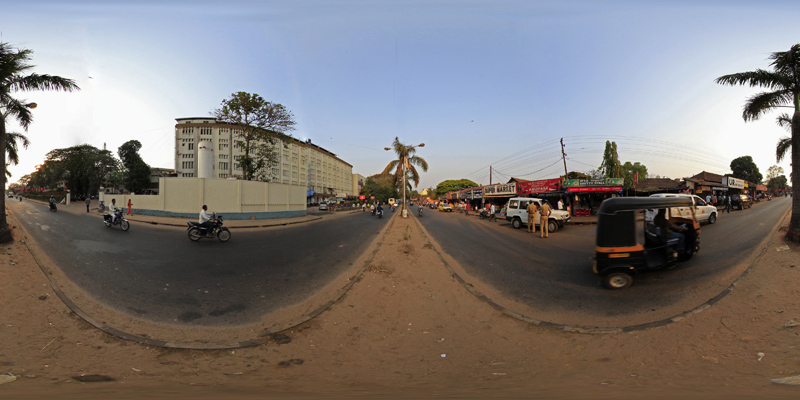 Main street in Manipal
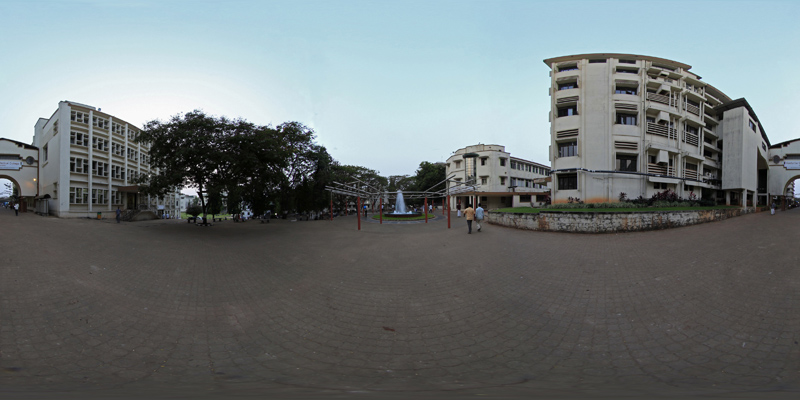
Driving around can be a stressful experience, at least for those of us used to traffic rules. Multi-lane roads don't have lane markings, anywhere on the road is fair game. There is an excessive use of the horn, vehicles drive so close to each other that it seems necessary to inform truck drivers of ones presence. Indeed the trucks (bottom left) generally have signs on their rear bumper asking motorists to sound their horn.
Getting around the town is pretty easy, it is small enough that one can walk to most places with 20 minutes. The three wheel style of transport are all pervasive, 20-30 rupee will get you to most central places. The hotel can arrange a car and driver, again very reasonably priced. Rough price seems to be 300 rupee per hour for an air conditioned car, you can choose your itinerary. Ask for an English speaking driver if you want to chat and learn a bit more about the surroundings. There is a pleasant lookout point, call "end point", past the sports centre and on the other side of some government buildings. A little too far to walk during the hot time of year. Getting there
The nearest airport is Mangalore (60km away), a relatively new and modern airport. In the case of an approach or take-off problem there is something reassuring about an airport on flat land and next to the ocean. The Mangalore airport on the other hand is built upon an outcrop, with cliffs before and after the main runway ... somewhat less reassuring thought when flying in through heavy weather. The Google Earth image below doesn't do justice to the steepness at each end of the runway. A warning to those who are addicted to the internet but not mobile phones, at least when travelling on holiday. The airports advertise free wifi internet but they send the login account and password details only as an SMS to a mobile. There doesn't seem to be any other way of getting access, the reasons are explained here, "in the interests of security of the nation"! See section (b) (ii) b, they don't offer (b) (ii) a. 
It is then a 90 minutes drive to Udupi and/or Manipal. The best hotel in town I suspect is the Valley Inn, even if you don't stay there the hotel restaurant/cafe is one of the better places to eat in town and very reasonably priced. A few minutes walk from the hotel is an excellent sports complex, everything one could want from lap pool, tennis courts, gym, etc. 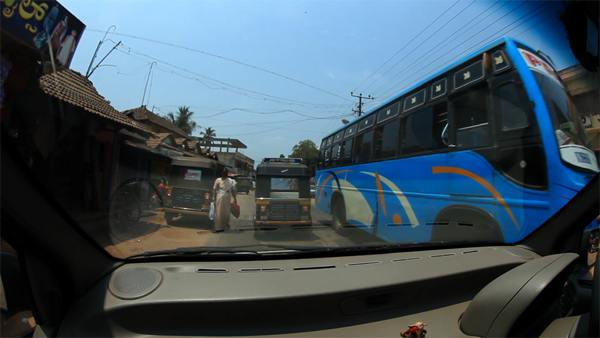 Movie: driving through Karkala Dr T.M.A Pai (1898 - 1975)
No discussion of Manipal would be complete without mentioning Dr T.M.A Pai who is essentially responsible for the town existing in the first place. The doctor was a practising physician in Upudi when he founded the Syndicate Bank along with his brother Sri Upebdra Ananth. In 1942 he founded the Academy of General Education which ultimately resulted in the birth of Manipal University on a once unused hill called Mannupalla. A nations progress is measured in terms of those citizens who are honest and upright in character.
Drops of water make the mighty ocean. Things individually beyond the reach of accomplishment become miraculously easy with collective effort. Though you cannot float a needle on the back of a single drop, the heavy burden of world trade are carried on the ocean. The house where Dr T.M.A Pai used to live is now a museum/monument to the man. Certainly worth a look, he is clearly remembered for some of his inspirational sayings. The different organs of the body function efficiently when they act in unison, so is the case with institutions. Gommateswara Statue
Built on Vindhyagiri hill in 1432 and 42 feet high it stands on the highest point in the area and overlooks the Chaturmukha Basadi Temple (see later). It is also known as the Monolith of Bahubali and was built by the warrior-poet Ghamundaraya. Seems to be a carved from a single boulder. 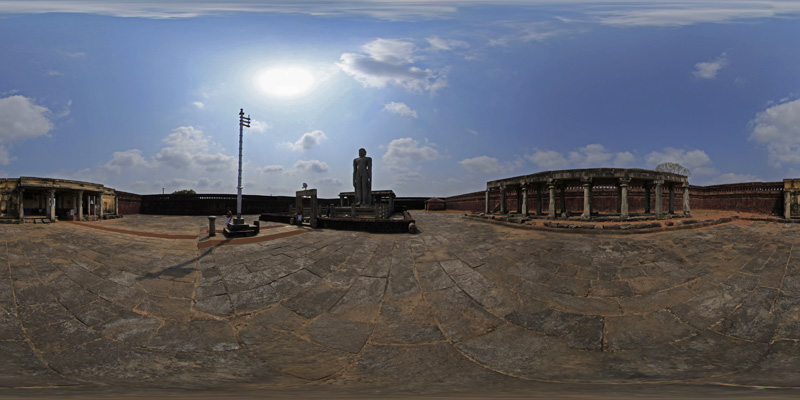
The 700 steps to the top seem to have been cut out of the rock outcrop itself, a gentle slope but some effort required in the hotter/humid months of the year.
Moodabidri (1000 pillar temple)
The town of Moodabidri, also known as Jan Kashi, is a religious centre for the Jains. The Thousand Pillar contains a sacred Basadis but more importantly the Jainism sacred scriptures, written palm leaves, can be found here. It is also known as the "Hosa Basadi" (New Basadi) or the "Thribhuvana Thilaka Choodamani" (Dazzling Precious Stone). It was built around 1430 on land donated by the governor Nagamangala Devaraja Odeyar, supposedly no two pillars are the same. The inner sanctum is inaccessible to visitors, it houses the sacred statue of Lord Chandranatha Swami. 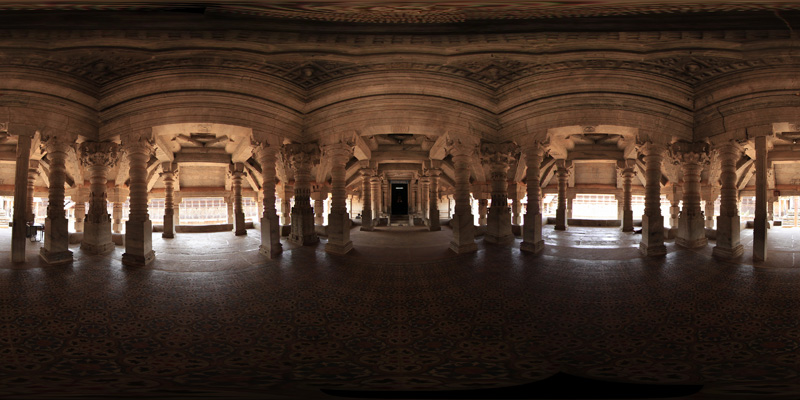
The entrance hall contains a number of "fractal" pillars, pillars within pillars. A rough count suggests to me that these miniature pillars are included in the 1000 pillar count.
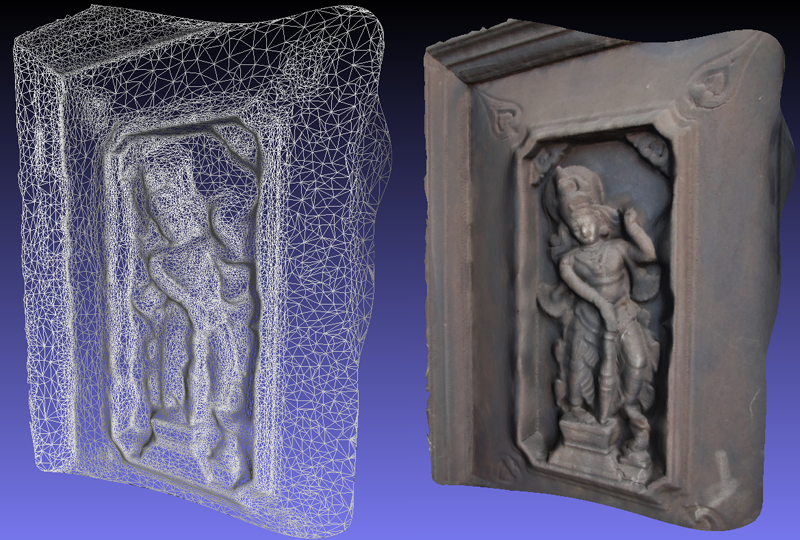 Automatic 3D reconstruction from multiple photographs

St Lawrence Shrine
As the story goes ... St Lawrence is reported to be a Spaniard living around the 3rd Century, he was ordained by St Xystus as Archdeacon in AD257. When Emperor Valerian started persecuting the church Lawrence distributed the churches riches to the poor. When asked by the prefect to present the treasury, Lawrence gathered and presented the poor, orphans, blind, and lame. The prefect was so insulted be ordered Lawrence to be burnt alive on a grill. The Shrine of St Lawrence at Attur Karkala was founded by Reverend Francis Salvadore De Serula in AD1759. After returning from the captivity under Tippu Sulthan, in AD1784 the Christians rebuilt the church. The present old church was built by Reverend Frank Pereira in 1902 and the new church in 2001 by Reverend Joswey Ferandes. 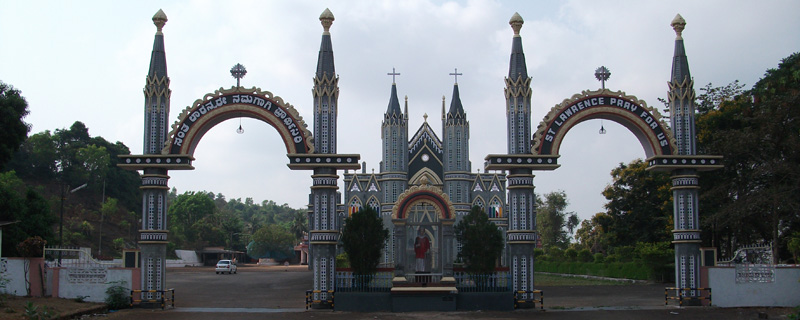 Twin entrances to match the twin towers
The twin towers in the front façade of the church are 90 feet tall and built in 1999. They incorporate Hindy, Muslim and Christian styles intending to symbolise inter-religious harmony.
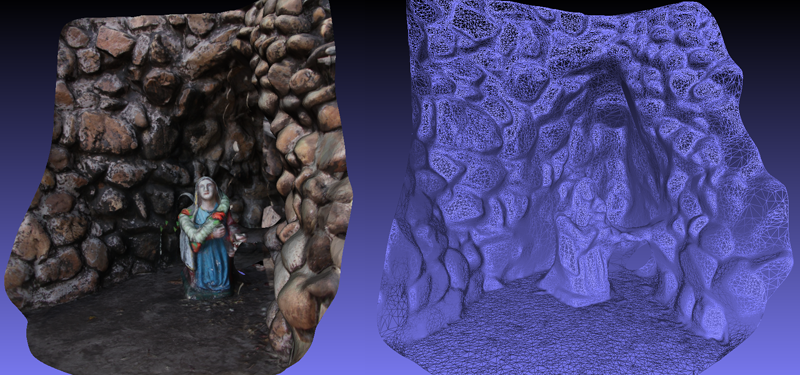 Automatic 3D reconstruction from multiple photographs
Chaturmukha Basadi Temple
Built upon a large mound of black rock from which the interior statues are hewn. The temple was completed around 1586 and features 4 identical sides. The statues are life size and consist of three thirthankars cut from the surrounding black rock.
The interior of the temple itself is normally closed to visitors, one can just view the three black statues from the doorway. If you do get inside custom is that you walk clockwise around the inner part of the temple. As usual, leave your shoes at the door.
 Movie (Sorry, no tripod) Krishna Gita Mahadwara
This Hindu temple complex is located within Udupi, about 15 minutes drive from Manipal, and a somewhat larger township. An absolutely fascinating place, could easily spend a few hours here exploring. It was originally founded by a 13th century religious leader Jagadguru Sri Madwacharya.
The inner sanctum of the temple, often crowded by locals seeking a view of the gods, and in the hot months rather oppressive. Again, walk clockwise (if viewed from above) and remove your shirt (men at least).
Malpi Beach
This is located perhaps 15 minutes drive from the centre of Udupi. A busy fishing port but also a remarkably pleasant beach front.
Manipal Planetarium (Little planet photograph)
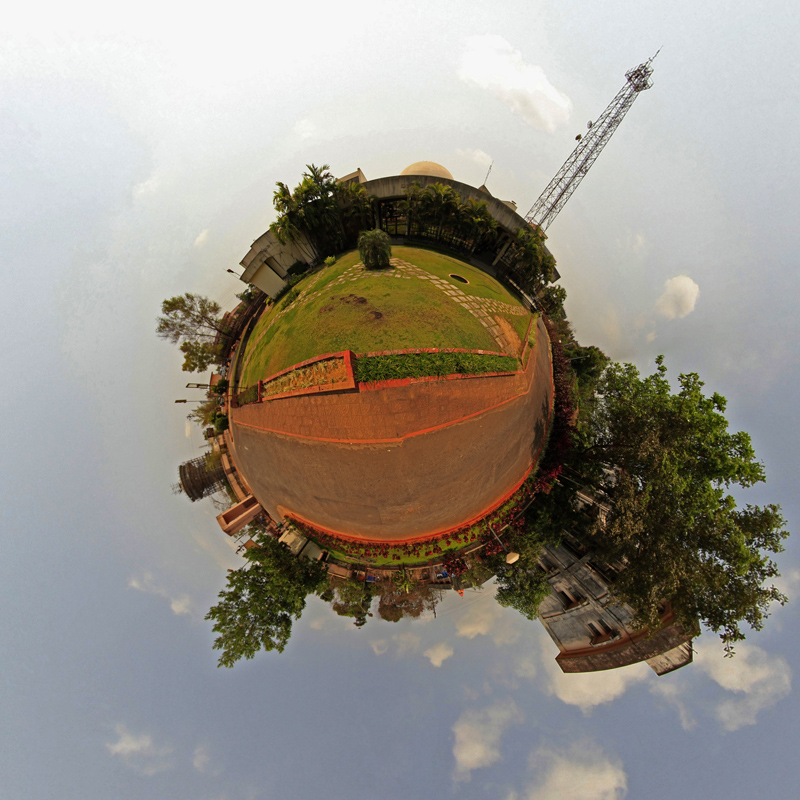
Miscellaneous
|
